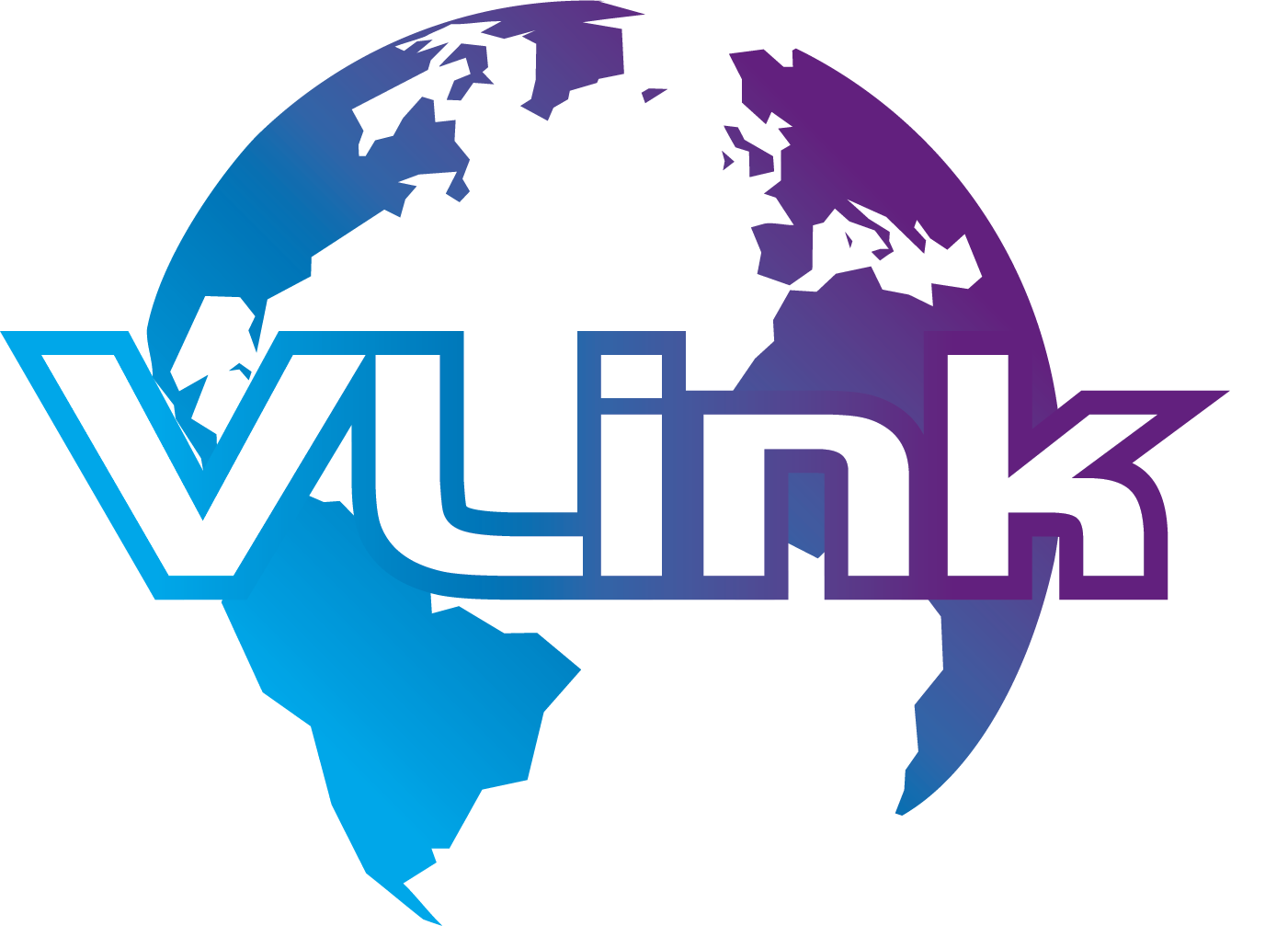In the modern digital economy, data is the most valuable—and most vulnerable—asset. For US and Canadian IT leaders and technology companies, navigating the evolving landscape of data protection regulations is no longer a matter of best practice; it is an absolute mandate for risk management, customer trust, and business continuity.
The regulatory environment across North America has never been more complex. The United States continues its patchwork approach with strong, enforceable state laws, such as the CCPA/CPRA, while Canada bolsters its unified national standard under PIPEDA and its pending CPPA update. Successfully operating in this cross-border environment requires a robust, harmonized IT compliance strategy with US and Canadian privacy laws, often best supported by specialized cybersecurity consulting services.
This comprehensive guide is specifically tailored for IT professionals and executives in North America. It will break down the core data protection laws for IT professionals, highlight the key differences between the US and Canada, provide actionable compliance checklists, and outline the essential data governance best practices in North America to secure your organization and grow traffic among key US/CA ICPs.
Data Privacy Landscape in North America
According to a 2024 report, over 60% of U.S. businesses have faced compliance audits for data privacy in the last year, and Canada has seen a 25% rise in enforcement actions under PIPEDA and its new CPPA update, forcing IT leaders to elevate privacy and cybersecurity protocols.
Overview of Data Protection Laws for IT Leaders
Data privacy compliance for IT leaders means engaging with a multi-layered regulatory structure that governs the collection, use, and disclosure of personal information. This structure includes:
1. Federal Laws: Such as HIPAA (Health Insurance Portability and Accountability Act), GLBA (Gramm-Leach-Bliley Act), COPPA (Children's Online Privacy Protection Act) in the US, and PIPEDA in Canada.
2. State and Provincial Statutes: Notably, the CCPA/CPRA in California, and provincial acts such as Quebec’s Bill 64/Loi 25.
3. Industry and Sectoral Rules: Specific standards governing financial services, healthcare (e.g., PHIPA in Ontario), and even specialized fields like Data Security and privacy in insurance app development.
4. Regulatory Bodies: Including the Federal Trade Commission (FTC) and State Attorneys General in the US, and the Office of the Privacy Commissioner (OPC) in Canada.
A unified compliance framework for IT leaders must be able to map responsibilities across all these jurisdictions.
US Data Privacy Laws for IT Leaders: The Patchwork Framework
The defining characteristic of the US regulatory landscape is its patchwork framework—the absence of a single, omnibus federal privacy law. This decentralized approach requires technology companies and IT departments to align with various federal, state, and sectoral regulations simultaneously.
Federal Regulations Setting the Baseline
While the US still lacks a federal equivalent to the GDPR or PIPEDA, several laws govern specific data types or sectors:

- HIPAA (Health): Sets strict standards for protecting Protected Health Information (PHI). IT must focus on access controls, encryption, and audit logs for all systems handling patient data.
- GLBA (Finance): Requires financial institutions to explain their information-sharing practices to customers and safeguard sensitive data. This impacts all IT systems involved in customer data processing.
- COPPA (Children): Demands verifiable parental consent before collecting data from children under 13, directly impacting the design and consent mechanisms in mobile applications and websites.
- The CLOUD Act (Cross-Border): The Clarifying Lawful Overseas Use of Data Act is a key consideration for cloud data compliance in the US and Canada, as it allows US law enforcement to compel US-based tech companies to provide requested data stored both domestically and abroad, a point of tension for Canadian data sovereignty.
State Laws: The Rise of CCPA/CPRA
The most profound shift in US data privacy regulations for technology companies has been driven by state legislation, setting a higher bar for consumer rights:
CCPA & CPRA (California): The California Consumer Privacy Act and its subsequent amendment, the California Privacy Rights Act (CPRA), are the national benchmark. They grant consumers the right to:
- Know what personal information is collected.
- Delete their personal information.
- Opt out of the sale or sharing of their personal information.
- Correct inaccurate data.
- Limit the use of their Sensitive Personal Information (SPI).
For the IT leader, achieving CCPA compliance involves implementing sophisticated data governance best practices in North America, including explicit consent flows, robust Data Subject Access Request (DSAR) portals, and transparent data mapping. The CPRA also established the dedicated California Privacy Protection Agency (CPPA), indicating stricter enforcement and the elimination of the 30-day "cure" period for violations.
The Virginia Consumer Data Protection Act (VCDPA) & Colorado Privacy Act (CPA): Along with laws in Utah, Connecticut, and a growing list of other states, these acts are creating a complex, multi-state compliance challenge. They often require pre-processing risk assessments for high-risk activities, such as targeted advertising and the processing of sensitive data, which fall squarely under IT risk management and privacy laws.
Compliance Checklist: US Data Privacy Regulations
To ensure adherence to the current landscape, especially for technology companies:

- Identify Applicability: Map your data flows to determine which state and federal laws (e.g., CCPA, CPRA, HIPAA, GLBA) apply.
- Data Mapping & Inventory: Create and maintain a detailed inventory of all Personal Information (PI) and Sensitive Personal Information (SPI) collected, including where it is stored and who has access to it.
- Implement DSAR Process: Establish a robust and auditable system for handling requests for access, deletion, and correction within the mandated 45-day timeframe (or shorter).
- Consent Management Platform (CMP): Deploy a system for collecting, documenting, and honoring explicit opt-out/opt-in preferences for the sale/sharing of PI and use of SPI.
- Vendor Due Diligence: Review and update Data Processing Agreements (DPAs) with all third-party vendors and cloud providers to ensure they meet your compliance obligations—a vital part of IT compliance consulting services.
- Risk Assessments: Conduct Privacy Impact Assessments (PIAs) or Data Protection Impact Assessments (DPIAs) for all high-risk data processing activities and new technology deployments (e.g., AI/ML models).
Canada Data Privacy Laws for IT Leaders: The Unified Approach
In contrast to the US, the foundation of Canadian data protection is the Personal Information Protection and Electronic Documents Act (PIPEDA), which serves as a clearer, national standard for private-sector organizations across most provinces. This unified approach makes navigating Canada data privacy laws for IT leaders slightly more streamlined, though provincial variants and new updates require diligent attention.
PIPEDA: The Core Principles
PIPEDA is founded on 10 Fair Information Principles that dictate how organizations must collect, use, and disclose personal information in the course of commercial activities:

1. Accountability: An organization is responsible for the personal information it collects, stores, and controls. A Privacy Officer must be designated to ensure compliance, and a comprehensive data governance framework must be implemented.
2. Identifying Purposes: The specific purpose for which personal data is collected must be identified, documented, and communicated to the individual at or before the time of collection.
3. Consent: The individual's knowledge and meaningful consent are mandatory for the collection, use, or disclosure of their personal information. Consent must be clear, understandable, and freely given.
4. Safeguards: Security safeguards appropriate to the sensitivity of the information must be in place. This directly informs the necessary data security regulations in the IT infrastructure.
Note: The remaining six principles—Limiting Collection, Limiting Use, Disclosure, and Retention, Accuracy, Openness, Individual Access, and Challenging Compliance—round out the complete framework, ensuring transparency and individual control over personal data.
The CPPA and Provincial Updates
The Canadian regulatory landscape is also in a state of rapid evolution, with new and proposed federal and provincial changes:
- Consumer Privacy Protection Act (CPPA): The proposed successor to PIPEDA (part of Bill C-27) will introduce a framework similar to GDPR and CPRA, with mandatory breach reporting, stricter rules for automated decision-making (AI transparency), and significantly higher financial penalties for non-compliance. IT leaders must prepare to implement a straightforward 'right to explanation' for decisions made by algorithms.
- Quebec's Bill 64 (Loi 25): This is one of the strictest provincial laws in North America, with requirements for privacy by default and by design, mandatory DPIAs, and heightened rules for cross-border data transfer laws in the US and Canada, including explicit adequacy assessments. This sets a higher bar for organizations handling data in Quebec.
Compliance Checklist: Canadian Data Privacy Regulations
To achieve and maintain PIPEDA compliance for Canadian businesses and US firms operating there:

- Appoint a Privacy Officer: Formally designate and empower a privacy officer to oversee and document all data compliance regulations.
- Document Purposes & Retention: Clearly document the purpose for all data collected and establish strict data minimization and retention schedules in line with Principle 5 (Limiting Use, Disclosure, and Retention).
- Meaningful Consent: Review consent mechanisms to ensure they are clear, understandable, and informed, especially for new and secondary uses of data.
- Security Safeguards: Ensure appropriate security measures (Safeguards) are implemented, including encryption (for sensitive data), strong authentication, and regular vulnerability testing.
- Breach Reporting Protocol: Establish a mandatory breach reporting protocol for the OPC, provincial regulators, and affected individuals, adhering to the tight notification timelines.
- Cross-Border Review: Review and formalize contractual agreements (such as SCCs) and notification procedures for all cross-border data privacy laws, including those related to US-Canada data transfers, to ensure compliance.
Key Differences: US vs Canada Data Protection Laws
Understanding the fundamental distinctions is essential for harmonizing a North American data protection regulations compliance program.
Dimension | US Data Privacy Laws (Federal & State) | Canada Data Privacy Laws (PIPEDA/CPPA) |
Legal Structure | Patchwork of federal (sectoral) and strong state (omnibus) laws (e.g., CCPA/CPRA). | Unified national law (PIPEDA) with stricter provincial variants (e.g., Quebec’s Bill 64). |
Consumer Rights Focus | Focus on consumer control: Right to Opt-Out of data sale/sharing, Right to Delete, Right to Limit Sensitive Data Use. | Focus on fair practices: Accountability, Meaningful Consent, Individual Access, and Correction. |
Enforcement | FTC, State Attorneys General, and dedicated state agencies (CPPA). | Office of the Privacy Commissioner (OPC), Provincial Regulators. |
Cross-Border Transfers | Governed by sectoral contracts (e.g., HIPAA BAAs) and the controversial US CLOUD Act. | PIPEDA requires organizations to ensure "comparable" protection and generally requires explicit consent/notification. Quebec is highly restrictive. |
Data Localization | Generally, there is no comprehensive localization requirement, but specific laws (e.g., health data) may apply. | Increasing provincial data localization requirements for public and sensitive data (e.g., BC, Nova Scotia). |
Right to Delete | Explicit, strong Right to Deletion (e.g., CCPA/CPRA). | Implied via the Limiting Retention principle; not a direct "Right to be Forgotten" like CCPA/CPRA (though CPPA may strengthen this). |
A multi-jurisdictional IT strategy must aim for the highest common denominator of protection. For instance, implementing the robust CCPA/CPRA data protection requirements for consumer rights, as well as the stringent PIPEDA principles for accountability and consent, will help cover most bases.
Cross-Border Data Transfer Laws: US-Canada
The transfer of personal data between the US and Canada is a critical and continually regulated operational area for North American data protection regulations. IT leaders must prioritize this for business functions like payroll, centralized CRM, and cloud backup.
- Canada’s Perspective (PIPEDA/CPPA): Under PIPEDA, organizations remain accountable for data transferred to a third party for processing, even if that party is outside Canada (e.g., a US-based cloud provider).
Organizations must:
- Use contractual measures to ensure a "comparable level of protection."
- Notify individuals that their data may be processed in a foreign jurisdiction, where it will be subject to the laws of that country (including the US CLOUD Act).
- US Implications (CLOUD Act): As noted, the US CLOUD Act can compel US-based cloud providers to turn over data, even if it is stored in Canada. This inherent tension means that Canadian customers are increasingly demanding specific contractual clauses and technical safeguards, like robust client-controlled encryption, to manage this risk.
- Quebec’s Stricter Adequacy Rules: Loi 25 (Bill 64) is highly restrictive, requiring an adequacy assessment before any cross-border data compliance transfer outside Quebec. The transfer must also be formalized by a written contract that specifies the safeguards and legal framework.
IT leaders must review all cloud contracts and third-party agreements to explicitly address these US-Canada cross-border data compliance requirements, rather than relying solely on generic global standards.
Data Governance Best Practices in North America
Effective data governance is the operational backbone of all IT compliance with US and Canadian privacy laws. It ensures that policies are consistently applied across technology, people, and processes.
Core Data Governance Pillars for IT Teams:

1. Data Minimization and Purpose Limitation:
- Practice: Only collect personal information essential to the stated purpose. Do not retain data longer than necessary.
- IT Action: Configure data retention policies in databases, cloud storage, and backups to enforce automated, secure deletion or anonymization of data.
2. Access Controls and Encryption:
- Practice: Personal data must be protected with security safeguards appropriate to its sensitivity (PIPEDA Principle 7).
- IT Action: Mandate end-to-end encryption (in transit and at rest) for all sensitive data, particularly for cross-border data transfer laws, such as those between the US and Canada. Implement the Principle of Least Privilege (PoLP) and Zero Trust architecture for network and application access.
3. Consent Management and Auditing:
- Practice: Maintain auditable records of all consent and opt-out requests.
- IT Action: Deploy an enterprise-grade privacy management software solution that logs every consent action (opt-in, opt-out, withdrawal) and integrates with marketing and data systems to enforce user preferences automatically.
4. Vendor and Third-Party Risk Management:
- Practice: You remain accountable for data shared with third parties, including cloud providers (PIPEDA Principle 1).
- IT Action: Establish a formal vendor risk management program. Require documented evidence of US-Canada cross-border data compliance (e.g., use of SCCs) and regular SOC 2 or ISO 27001 audits from all critical vendors.
5. Breach Preparedness and Response:
- Practice: Implement rapid and well-documented breach notification protocols for all relevant regulators (e.g., OPC, FTC) and affected individuals.
- IT Action: Develop and regularly test a comprehensive Incident Response Plan (IRP) that incorporates both data security regulations and the tight legal breach notification timelines mandated by CPPA and many US state laws.
Cybersecurity Consulting Services & IT Risk Management
For IT leaders facing the complexity of data privacy regulations for technology companies and the sheer volume of data, relying solely on in-house legal interpretation is insufficient. Specialized IT compliance consulting services are crucial for translating legal obligations into tangible technical controls.
Cybersecurity consulting services focused on data privacy can provide:
- Comprehensive Risk Assessments: Going beyond penetration testing to conduct specific Privacy Impact Assessments (PIAs) and DPIAs for new systems or processing activities. This proactively addresses IT risk management and privacy laws.
- Privacy-by-Design Implementation: Working with development teams to embed privacy principles (e.g., data minimization, pseudonymization) into the earliest stages of application, cloud, and insurance app development.
- Privacy Management Software Integration: Implementing and configuring privacy management software to automate workflows for consent tracking, cookie management, DSAR handling, and mandatory breach reporting.
- Compliance Framework Documentation: Developing and maintaining auditable documentation of the compliance framework for IT leaders, mapping controls to standards like ISO/IEC 27001/2, NIST SP 800-53, and the specific requirements of CCPA, CPRA, and PIPEDA.
- Cloud Data Compliance: Auditing cloud data compliance in the US and Canada to ensure proper data residency, access controls, and encryption are in place, especially regarding the CLOUD Act implications.
Managing Data Security Under Multiple Regulations
For US and Canadian organizations operating cross-border or multi-state, the strategy cannot be to comply with one law at a time. It must be to build a unified system that satisfies the most stringent requirements across all applicable jurisdictions.
1. Conduct a Gap Analysis: Systematically compare the requirements of the most demanding laws you face (e.g., Quebec’s Loi 25, CCPA/CPRA, HIPAA) against your current controls. Prioritize filling the most significant gaps.
2. Harmonize Compliance Frameworks: Adopt internationally recognized standards (like NIST or ISO 27001/2) as your technical foundation. These frameworks often provide the necessary structure to satisfy the general requirements of both information security regulations and the Personal Data Protection Act mandates.
3. Leverage Technology: Utilize privacy management software that is inherently designed to manage multi-jurisdiction data subject rights and localize consent notices automatically based on the user's IP address or location.
4. Localize Sensitive Data (Where Required): Recognize that certain provinces (like Quebec and British Columbia for public-sector data) have strict data residency or localization mandates. Develop a strategy for segmenting and storing highly sensitive data (e.g., health information) to meet these specific demands.
What IT Leaders Need to Know to Ensure Compliance
Compliance is an ongoing organizational commitment, not a one-time project. It is the responsibility of every IT leader to position data governance as a strategic priority that builds customer trust and drives business growth.

- Stay Current on Regulatory Shifts: The current pace of new state laws (e.g., the potential for a new federal ADPPA) and the implementation of CPPA/Loi 25 means that what is compliant today may be non-compliant tomorrow. Implement automated regulatory monitoring.
- Invest in Training and Culture: The single biggest risk is human error. Regularly update compliance documents and make comprehensive employee training on privacy principles and data protection regulations mandatory for all staff, especially those with access to customer data.
- Strategically Use Cybersecurity Consulting Services: Engage with experts for high-risk, complex areas such as AI governance, DPIAs, and cross-border risk assessments. External guidance offers an objective and up-to-date perspective on the necessary technical and procedural controls.
- Automate Compliance Workflows: Leverage privacy management software to centralize and automate DSARs, consent management, data mapping, and audit trails. Automation reduces the administrative burden and provides the irrefutable evidence of compliance that regulators demand.
- Build Trust through Transparency: Go beyond minimum legal requirements. Use clear, accessible, and honest privacy notices and policies. Demonstrate to your North American customers that a superior compliance framework for IT leaders protects their data.
Choose VLink's Services to Protect Your Data
Navigating the intricate web of data privacy compliance in the USA and Canada—from CCPA compliance for IT leaders to ensuring full PIPEDA compliance for Canadian businesses—is a specialized discipline that extends far beyond general IT operations. For high-growth, cross-border, or regulated technology companies, partnering with a focused expert is the most effective path to achieving robust, auditable compliance and genuine data resilience.
VLink's Cybersecurity Consulting Services provide a strategic partnership tailored to the North American IT landscape. Our dedicated team approach is compliance-centric, risk-based, and aligned with the highest standards of data governance best practices in North America.
Our Tailored Compliance Solutions:
- Unified Compliance Framework Design: We don't build separate compliance programs for the US and Canada. We develop a single, harmonized compliance framework for IT leaders that meets the most stringent requirements of both jurisdictions, preparing you for the full impact of CPRA, Quebec’s Loi 25, and future regulations.
- Cross-Border Data Compliance Audits: We conduct in-depth audits focused on cross-border data privacy laws, specifically the US-Canada context, assessing your cloud environment, data flows, and vendor contracts against the complex requirements of the US CLOUD Act, PIPEDA, and provincial localization mandates. This ensures your cloud data compliance in the US and Canada is ironclad.
- Privacy Management Software Integration: We move you beyond manual spreadsheets by implementing and optimizing industry-leading privacy management software. This automates Data Subject Access Requests (DSARs), manages the complex consent landscape (opt-in/opt-out), and streamlines the mandatory breach reporting processes required under multiple data compliance regulations.
- Proactive IT Risk Management: Our consultants embed IT risk management and privacy laws into your development lifecycle, conducting mandatory DPIAs/PIAs for new features or algorithmic processing (essential for data privacy regulations for technology companies like insurance apps). This proactive stance minimizes legal exposure and reduces the cost of reactive clean-up.
- Certified Expertise: Our team of skilled cybersecurity consultants is trained in a compliance-centric framework (e.g., GLBA, ISO 27001, NIST, GDPR), ensuring that the technical solutions we recommend directly satisfy your legal obligations across the entire spectrum of data protection laws for IT professionals.
Don't wait for the next regulatory deadline or breach headline—partner with VLink to turn compliance into a competitive advantage.
Conclusion: Positioning Data Privacy as a Strategic Imperative
For US and Canadian IT leaders, the conversation around data privacy has fundamentally shifted from legal inconvenience to a core strategic component of business trust and longevity. The convergence of strict state laws (CCPA, CPRA), evolving national standards (PIPEDA, CPPA), and the complexity of US-Canada cross-border data compliance demands a proactive, unified approach.
The path to secure and successful operation in this environment is clear:
1. Embrace the Highest Common Denominator: Build your security and information security regulations around the strictest rules you face, ensuring blanket coverage.
2. Automate Governance: Leverage privacy management software and robust data mapping to efficiently manage compliance workflows in a transparent and auditable manner, freeing your team to focus on innovation.
3. Invest in Expertise: Ongoing engagement with cybersecurity consulting services is crucial for navigating the rapid legislative and technological changes, particularly those related to AI transparency and enhanced data security regulations.
By transforming legal mandates into operational excellence, IT leaders can move beyond simply avoiding fines. They can secure their systems, protect their users, and build the foundation of trust necessary to drive long-term success for their technology companies in the US and CA.
Ready to solidify your compliance posture and secure your data future? Contact VLink today for a comprehensive, cross-border compliance assessment.










 Shivisha Patel
Shivisha Patel

















